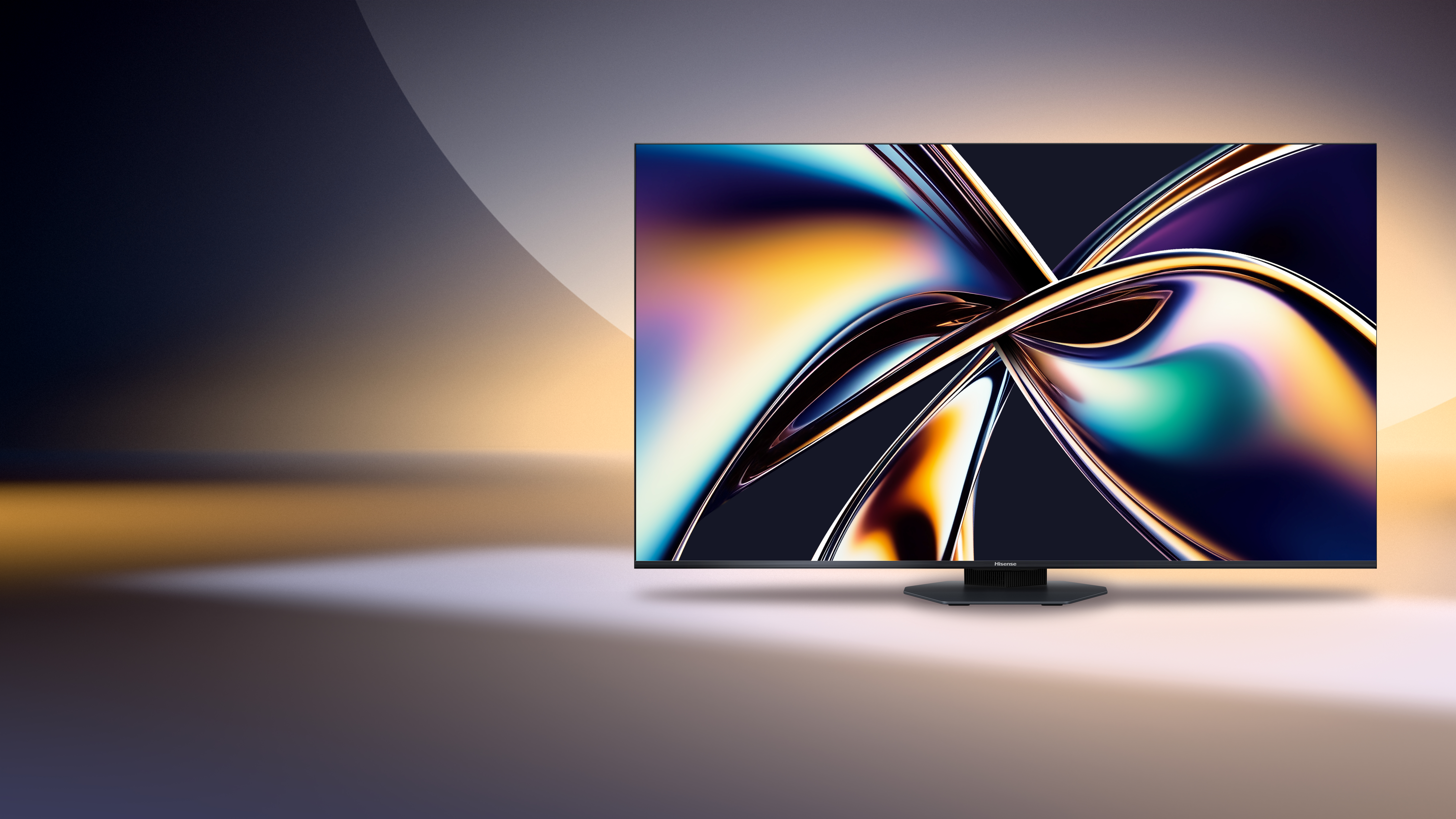Hisense just did something with its 2025 TV range that Sony and Panasonic have been getting wrong for years
Is the end of the HDMI 2.1 drought in sight?

Hisense has finally revealed everything about its 2025 TV range, and there's something special about these TVs that should put competitors on edge.
We already had confirmation of Hisense's 2025 lineup, with the announcement of new Mini LED models including the U8Q and U7Q, which replace the formidable U8N and U7N, respectively. There's even an OLED TV, if you can believe it, but that's somehow not the most shocking reveal.
What's really blown our minds is the fact that in certain markets, the U8Q (the flagship model that will come to the UK) and the UXQ (which won't be launching in the UK) will both feature three HDMI 2.1 sockets, which is quite literally game-changing.
While the U8Q hasn't launched in the UK yet, Hisense's listing for the TV on its US site confirms the inclusion of three HDMI 2.1 sockets, so we'd be surprised to see it omitted from the version that's set to launch soon on this side of the pond.
We've become accustomed to TVs from the likes of Hisense, TCL, Sony, Panasonic and Philips that are stuck with just two sockets. Now, this has never necessarily been a deal-breaker; plenty of TVs from those brands have been awarded five stars.
But it's always been a thorn in the side of serious gamers. All three current generation game consoles – including the recently released Nintendo Switch 2 – include support for 4K/120Hz gaming with ALLM and VRR via HDMI 2.1.
So, if you own more than one console and an HDMI eARC-enabled audio system, you'd have to make a tricky choice to prioritise one console, while relegating the others to HDMI 2.0.
The latest hi-fi, home cinema and tech news, reviews, buying advice and deals, direct to your inbox.
This, of course, limits you to 4K/60Hz and drops ALLM and VRR support, but if you don't make this sacrifice, then you're stuck with your TV's speakers.
Thankfully, Hisense is the first to tackle this issue head-on, and it's done so by upgrading from the currently available MediaTek Pentonic 700 to the new Pentonic 800 chipset.
That new chip will affect more than just HDMI availability. Picture and sound should also get a boost, but we'll have to assess that in our full review down the line.
Hisense has also confirmed that this third HDMI 2.1 socket is a full-bandwidth port, with support for up to 4K/165Hz signals, meaning all gamers should be catered for regardless of your preference for consoles or PC.
There is a slight catch, however. Those three HDMI 2.1 sockets are your lot, with the usual fourth HDMI socket being curiously swapped out for a USB-C socket.
This will make connecting laptops, smartphones and tablets easier if that's something you do regularly, but this could be hinting towards another new connectivity feature coming down the line.
We recently reported on the announcement of General Purpose Media Interface, or GPMI, which is a Chinese-developed competitor to HDMI 2.1. It's capable of supporting higher bandwidth signals alongside power delivery and data transfer, making it an all-purpose connector for video, charging and data.
Interestingly, the GPMI Type-C uses a standard USB-C connection, and Hisense is one of the companies confirmed to be backing the project with plans to include it on future TVs.
The decision to swap a fourth HDMI socket for a USB-C connection could, therefore, be laying the groundwork for GPMI.
Regardless, Hisense's extra HDMI 2.1 socket trend is something we hope that more manufacturers adopt soon, as it has been a sticking point for quite a few years now.
Sony, Panasonic and Philips have confirmed that their respective 2025 TV ranges will be limited to two HDMI 2.1 sockets, so is Hisense already at an advantage? It certainly will be for gamers, but the final assessment will, of course, be mostly down to picture performance.
MORE:
Read our full Hisense U8N review
As well as our Hisense U7N review
And check out our list of the best Mini LED TVs
Lewis Empson is a Senior Staff Writer on What Hi-Fi?. He was previously Gaming and Digital editor for Cardiff University's 'Quench Magazine', Lewis graduated in 2021 and has since worked on a selection of lifestyle magazines and regional newspapers. Outside of work, he enjoys gaming, gigs and regular cinema trips.
You must confirm your public display name before commenting
Please logout and then login again, you will then be prompted to enter your display name.
